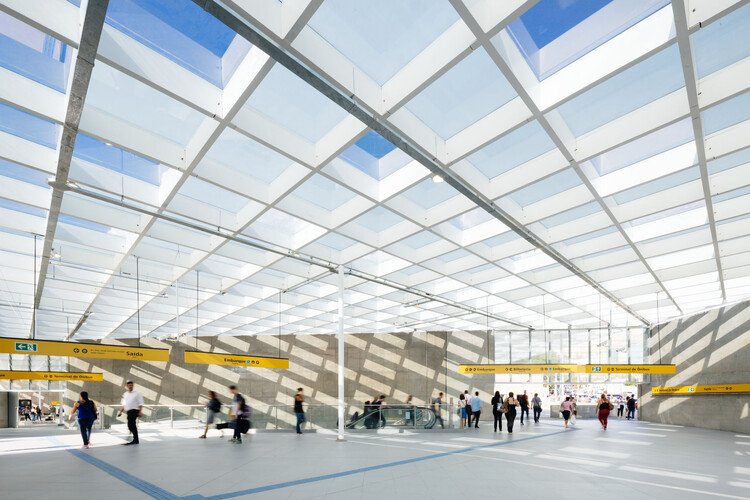
-
Architects: 23 Sul
- Area: 16789 m²
- Year: 2018
-
Photographs:Pedro Kok, Danilo Verpa
-
Lead Architects: André Sant´Anna da Silva, Gabriel Manzi, Ivo Magaldi, Lucas Girard, Luis Pompeo, Luiz Florence, Moreno Zaidan Garcia, Rafael Urano Frajndlich, Tiago Oakley

Text description provided by the architects. The São Paulo-Morumbi station, more than an urban transport facility, is an intermodal connection in the city of São Paulo. Pedestrians, cyclists, “hitchhikers” and bus and metro passengers cross this space daily, whether to start or finish an urban journey or just to transfer from one form of mobility to another.



The station's architectural design was born from the organization of commuting movements that result from the interaction of local demands with the metropolitan flows typical of a metro-railway network. In a hostile context to pedestrians, with wide and heavily loaded avenues, the strategic arrangement of vertical planes expresses the best accommodation of these flows, in order not only to create generous access to the subway platforms and the attached bus terminal but also to configure spaces pleasant stay.




A large flat roof organizes the entire surface-level design, supported on slender metal pillars and concrete walls. It is what gives unity to the different functional sectors of the station, giving the building its identity and, at the same time, respectful dialogue with its surroundings. The translucent cover promotes controlled light filtering, leaving the circulation axes more illuminated and the areas of permanence shaded, drawing lights and shadows in constant movement throughout the day.




The station's executive architectural, landscaping, and visual communication project was developed based on the construction guidelines defined by the Metro in the basic design stage and on sections of the station already carried out in the previous phase, which focused on the platform tunnel. However, several conditions indicated the need for the executive project to significantly redesign what had been adopted, with changes, mainly, on the ground floor in both accesses, on the first underground floor (mezzanine), and on the main shaft of the north access. This project was carried out by 23 SUL with the Hidroconsult Consortium, Noronha, LENC (HNL)












































